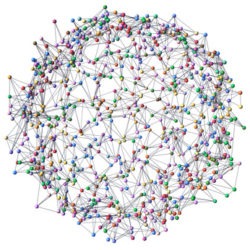What is the Industrial Internet of Things?
A. Things that talk to each other
B. Just another buzzword
C. Ethernet-connected things
D. Where industrial automation has been headed all along
I think the answer is “All of the Above.” Let’s look at each answer individually. But first, what’s a “thing” anyway?
In the consumer version of the Internet of Things (IoT – one “I”), things are toasters and coffee makers and refrigerators… and thermostats and light switches and the list goes on. But in Industrial Internet of Things (IIoT – two “I”s), things are sensors and actuators and IO blocks and PLCs and vision systems and drives. And because things can include other things, things are machines and production lines and manufacturing plants.
Things that talk to each other
In the industrial environment sensors connect to IO blocks which connect to controllers. They “talk” to each other. They communicate back and forth using an industrial protocol like PROFINET.
Just another buzzword
Well, it certainly is a buzzword or, more accurately, a buzz phrase in this case. That’s not necessarily a bad thing. It’s just a name for our current and future industrial automation environment.
Ethernet-connected things
Yes, they are Ethernet connected things, but that does not mean directly connected with Ethernet. A limit switch may be hardwired into an IO block. It’s connected to Ethernet – just not directly.
Some devices cannot be directly connected to Ethernet; for example, devices that are in an intrinsically safe environment (an environment where a spark can cause an explosion, so power must be limited to prevent that). We have PROFIBUS PA for those situations. And PROFIBUS PA integrates into PROFINET (and therefore IIoT) using a PROFINET-specified device called a proxy.
Some devices can be networked but including an Ethernet connection is cost prohibitive. Think AS-Interface and IO-Link. They can still integrate via proxy.
Wired (copper) connections, fiber connections, and wireless connections – still Ethernet.
Where industrial automation has been headed all along
Short answer: those of us who have been around a while have seen this evolving.
Long answer: come back next week.
–Carl Henning
